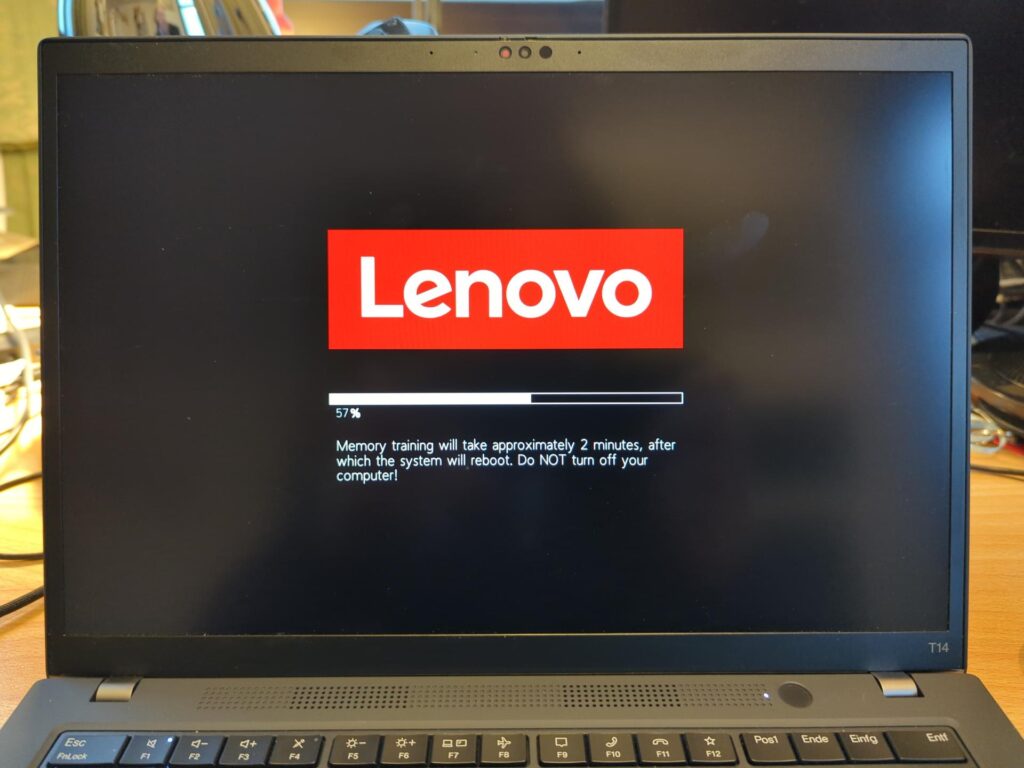A while back I read an article about new WordPress blogs getting attacked as soon as a TLS certificate is requested from a certificate authority. Here is an example. This is possible because there is a public certificate transparency log that shows for which domains a new TLS certificate was registered. This public log is vitally important to detect malicious actors getting certificates for web sites they don’t own. On the other hand, bad actors also get aware in almost real time of potentially new websites which are not yet properly secured. So is this actually misused? When I recently got a certificate for a new domain name, I had a close look at the http log to see what would happen.
Continue reading Get a TLS Cert for a Domain Name and the World Visits YouRunning Ubuntu 22.04 on X

Yes, I’m late to the game. A couple of months ago, I upgraded from Ubuntu 20.04 to Ubuntu 22.04. I’m late because by 2022, Canonical decided that the Wayland graphical display system was the way to go and X should be on the way out. At the time, I tried out Wayland to see how well it would work for a number of everyday scenarios I have, particularly with remote screen sharing and support. It turned out that Wayland had come a long way, but I found remote support with tools that only worked on X still had the advantage. So when I finally migrated my own notebook to 22.04, well ahead of the devices I support, I switched from Wayland to X to see how well Ubuntu 22.04 would ‘still’ run on X. Now a couple of months later, I can say that I didn’t detect any major problems, the system runs on X just fine.
In about 3 months, Ubuntu 24.04 will be out, and as far as I understand, it will still be possible to switch to X for the Graphical User Interface. Once the final version of 24.04 is out, I will revisit the Wayland vs. remote screen sharing topic again to see if it has improved in the meantime. If not, then I will repeat the X-exercise with 24.04 again and, if things still work smoothly, migrate the devices I support from 20.04 to 24.04 in one go.
6 GHz Wi-Fi Pitfalls in 2023/24
Yes, I’m on the 6 GHz trail at the moment, because I want to find out how useful that band currently is and where the limits are. So here’s another post on the topic. In previous articles I have already mentioned that one 6 GHz capable notebook of mine simply refuses to use the band at all, no matter whether Window or Linux is running, and the second one gets easily fooled into switching off the 6 GHz band for a while when it sees ‘rouge’ access points. But unfortunately, there is more.
Continue reading 6 GHz Wi-Fi Pitfalls in 2023/24Ubuntu 22.04 – Bluetooth Mouse and Bluetooth Headset
Quick success story: About a year ago, a combination of wireless USB mouse and USB port problem made me try something new. This was when I found out that unlike its predecessor, Ubuntu 20.04 supported Bluetooth HID devices such as mice and keyboards. So I switched over and no longer needed that small but still visible and slightly clunky USB wireless receiver.
A Bluetooth device that didn’t work well with Ubuntu 20.04 on my hardware, however, was my Bose Bluetooth headset. It would connect and work just fine, but one of my CPU cores would go into overload while the headset was connected. Since then I migrated to Ubuntu 22.04 and gave it a try on the same notebook again. This time around, everything worked well! No problems at all anymore when listening to music and using it for video calls also works like a charm. Even my Bluetooth Mouse and the Bluetooth headset work together at the same time. Very nice!
Container Games: When LATEST is not the greatest, and how it broke my MediaWiki
Infrastructure as code they say, so I built myself a wonderful Ansible script to update my virtual machines and container installations on a regular basis without manual intervention. This has worked superbly in the past two years or so, but this week I was bitten. When I searched something in my (containerized) MediaWiki instance today, nothing could be found, and when clicking on any page in the ‘recent changes’ section, I only got a red ‘no text for this page’ error. I have to admit that this gave me goose bumps for a moment because a lot of effort went into this Wiki. So I soldiered on to investigate…
Continue reading Container Games: When LATEST is not the greatest, and how it broke my MediaWikiLenovo Thinkpad BIOS Update Games – Reloaded!

Early in 2023, I wrote a blog post about the different levels of BIOS upgrade support for Linux by Lenovo for their different notebook lines. T and X series get excellent support, and now, in late 2023, I have received the first BIOS upgrade for my Lenovo T14 Gen 4 (Intel), which was just recently launched. I was positively surprised the OS offered me to install the upgrade, because I’m running Ubuntu 22.04, which was released last year and well ahead of this notebook.
Continue reading Lenovo Thinkpad BIOS Update Games – Reloaded!37C3 – Martin @ Congress

Those of you who have been to ‘Congress‘ before know it’s a special event for anyone even remotely nerdy. It always takes place between Christmas and New Year’s Eve and I was lucky enough to get a ticket. It seems they still remembered I gave a talk there about 5G last time around. After not having taken place for a number of ‘Covid’ years and after moving back from Leipzig and 17.000 participants to the significantly smaller Congress Center Hamburg, I was not sure how things would work out and whether I would like it. So I jumped in to find out.
Continue reading 37C3 – Martin @ CongressLenovo T14 Gen 4 and Intel AX211 Wi-Fi – When ‘Rouge’ APs Disable My 6 GHz Wi-Fi
When I was recently on business travel, I used my smartphone for Wi-Fi tethering my notebook to the Internet over the 6 GHz band. But every now and then, my notebook wouldn’t find the smartphone’s network and I had to switch to the 5 GHz band to make it work again. After a bit of back and forth between the two bands over a couple of days I noticed a pattern.
Continue reading Lenovo T14 Gen 4 and Intel AX211 Wi-Fi – When ‘Rouge’ APs Disable My 6 GHz Wi-FiThings That Moved Me in 2023
It’s the time of the year again to reflect on what has happened in the last 12 months. It’s been quite a ride again, with many things happening, and also some things not happening. So if you are interested, come with me on a trip through my year in tech 2023.
Continue reading Things That Moved Me in 2023Lenovo T14 Gen 4 and Intel AX211 Wi-Fi – Performance in 5 and 6 GHz – Part 5

One of the interesting new features of the Lenovo T14 Gen 4 I haven’t had in my previous production notebook was the support of Wi-Fi in the 6 GHz band. So I was obviously quite curious how this would work and how performance would look like. So here’s the story.
Continue reading Lenovo T14 Gen 4 and Intel AX211 Wi-Fi – Performance in 5 and 6 GHz – Part 5